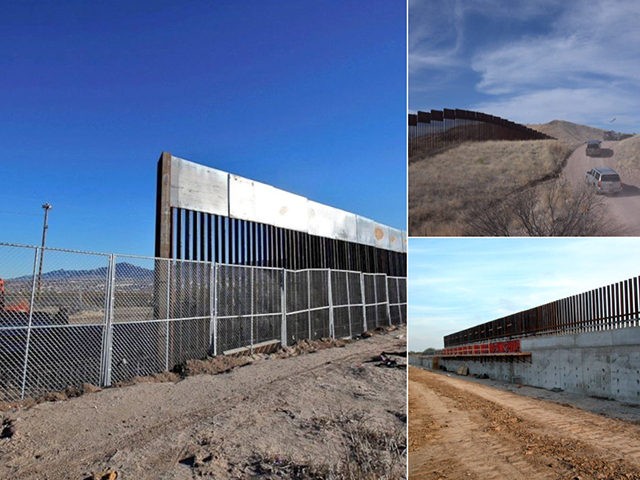The border patrol will get only about 50 miles of new fencing in 2018, the chief of the border patrol reluctantly acknowledged Friday.
“We appreciate what Congress has authorized,” said Ronald Vitiello, chief of U.S. Border Patrol. “There are restrictions in this appropriation … [because] Congress decided that our priorities weren’t theirs.”
“We got every dollar we asked for [in May 2017], but it is configured in a kind of different way,” he acknowledged.
GOP and Democratic leaders in Congress approved the administration’s May 2017 request for $1.6 billion in 2018, but they agreed behind closed doors to add riders which ensure that no concrete-and-steel wall could be built and that only $641 million could be used for new fences. That bipartisan cooperation minimizes barriers to the northward flow of cheap labor and also weakens President Donald Trump’s support among his populist voters.
The $641 million in 2018 funds will fund 100 miles of new and upgraded fencing, Vitello said.
Vitello dodged media questions about how much new fencing would be added to the existing inventory of 300 miles of fencing which blocks walking migrants and the 354 miles of vehicle barriers. The 50 miles of replacement and upgraded fencing “is all new; there’s a different design going in … I would call it all new,” he said, adding that all the new fencing is anti-pedestrian fencing.
By subscribing, you agree to our terms of use & privacy policy. You will receive email marketing messages from Breitbart News Network to the email you provide. You may unsubscribe at any time.
Vitello repeatedly described the new fences as “walls,” or “walls systems,” or “border barrier system.” The bipartisan omnibus explicitly bars new walls.
The $25 billion plan being pushed by Trump — and being blocked by congressional leaders — “would make a big difference to those [border] projects,” Vitello said. It would allow the border agency to build barriers on roughly 1,300 miles of the border, he said.
When asked if the Department of Homeland Security could work with the Department of Defense to build the border wall, Vitello responded: “We’d be happy to do that.”
The 2018 funding, plus the small amount of funding approved in 2017, will fund the construction of:
Thirty-three miles of new fence and 35 miles of replacement fencing in the Rio Grande Valley of Texas, where the existing fencing has many wide gaps.
Twenty-five miles of new levee wall in Hidalgo County, Texas.
Eight miles of new fence in Starr County, Texas.
Twenty new miles of fencing in Santa Teresa, N.M. This fencing replaces anti-vehicles fences, construction starts in April.
Fourteen miles of border fencing in San Diego, Calif., which was built with landing mats, will be replaced by bollard wall.
Fourteen miles of secondary fencing in San Diego will also be replaced by modern fencing.
Thirty-five gates will be added throughout a 55-mile stretch of existing border wall in the Rio Grande Valley, helping the border patrol easily enter the zone between the fence and Mexico.
The border patrol is already using some of the 2017 funds to upgrade the fence in Calexico, Calif, near the Arizona border.
‘Without the president and the administration’s leadership and commitment to border security, the funding for these projects would not be possible,” Vitello said.

COMMENTS
Please let us know if you're having issues with commenting.